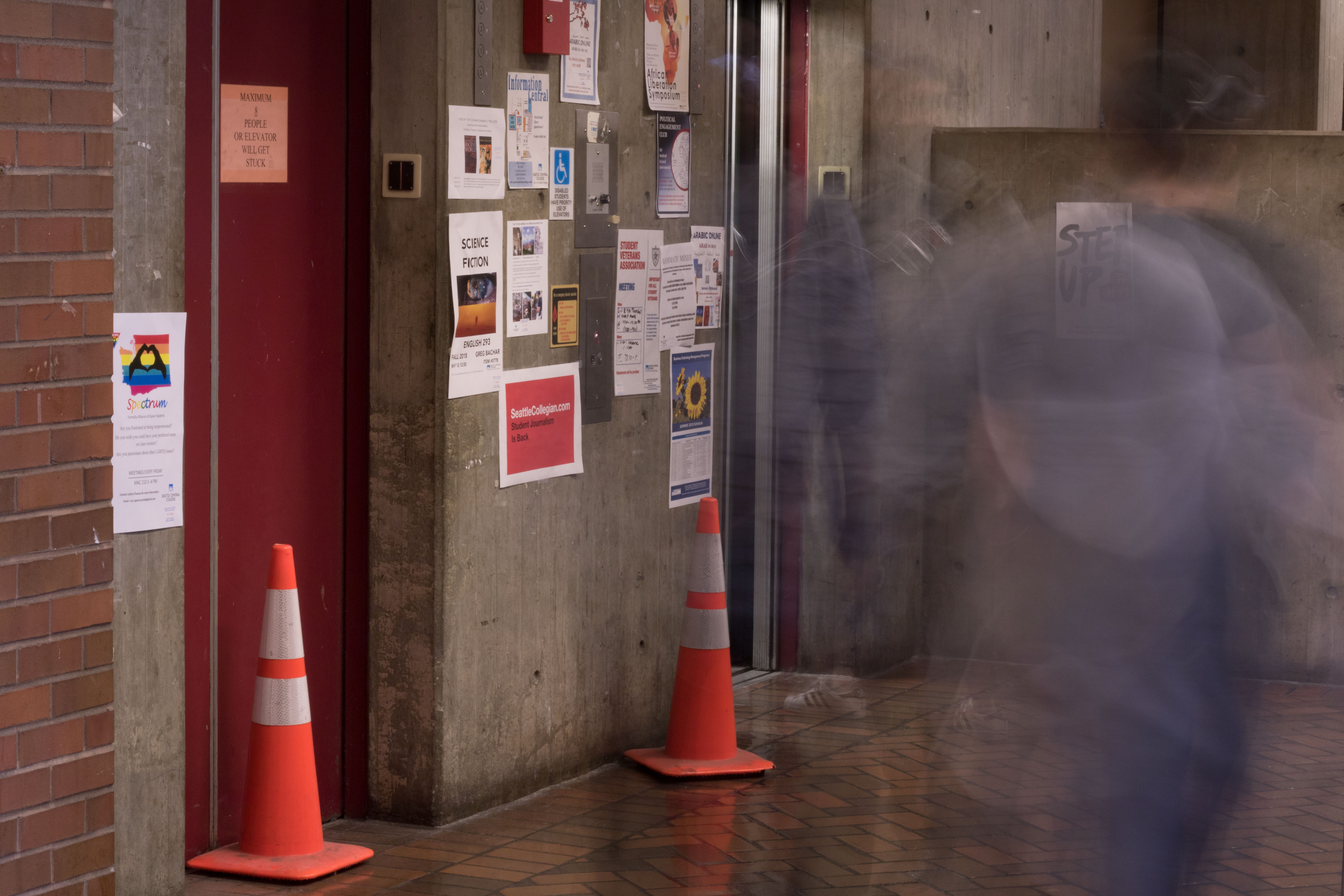
Repairs Coming For Aging North Elevators
Written by Casey Cabebe, 06/15/2018
Expect the north elevators in the BE building to be out of service for repairs for an extended amount of time. Currently, elevator #2 is out of service, and though elevator #1 remains in service, facilities expects it to fail soon. It has already failed once the week of April 6th.
The school has budgeted $1 million dollars for the full repairs, but a temporary fix to extend their lifespan will cost $36,000.
Facilities has requested the necessary permits, but there could be up to a six month delay for acquiring those permits so work may begin on the 42-year old elevators. If you’re holding your breath in anticipation for the elevators to be fully operational, you should find a seat and exhale.
Facilities Director Dave Ernevad stated the cause of the malfunction is a combination of factors, but the main problem lies with the brushes on the motors powering the lifts. The brushes become worn out over time, which causes safety concerns. Access to the brushes, which are located beneath a large casing that sports a motor weighing roughly 1,000 pounds, requires special equipment.
Further complicating matters, the brushes and their mounting are so old they are no longer manufactured, and must be custom machined.
Despite highly regulated scheduling to ensure that the antiquated elevators are maintained over the years, they are at the end of their lifespan.
Both elevators #1 and #2 have this issue, and both will be repaired in this maintenance cycle. But why the delay?
“The college is working within the confines of the system that requires [us] to protect taxpayers against improper use of money is one part,” Ernevad said. “The other part of it [is] where the elevators are concerned, there are so many regulatory agencies. We call them ‘jurisdictional authorities.’”
Ernevad and his staff are not new to the complications of bureaucracy, having previously experienced renovating elevators #3 and #4 by the main entrance at a cost of $400,000 each. As far as capital planning is concerned, in the coming biennium the school will receive almost a million dollars in funding from the state to completely modernize elevators #1 and #2; the $36,000 used to fix the elevators in the short term will be somewhat of a sunk cost. The repair will allow for elevator service to resume until the modernization in summer of 2020.
For some students, elevator service is a vital part of everyday life. “We know there’s demand. We know we need to provide elevator service,” said Ernevad
Cebrina Chavez, program coordinator for the Disabilities Support Services on campus, fields complaints from students with motor disabilities. “Obviously one of the main ways to get around the school are the stairs and the elevators, so for anybody with a mobility disability having those elevators out of commission is going to affect their ability to be able to get to class on time.”
Larisha Nicholson, diagnosed with cerebral palsy, uses a wheelchair and depends on the elevators to get to class. With one out of commission, more and more students crowd the remaining elevators making her daily journey even more difficult.
“There are a lot of students and instructors that are able bodied [who] do not take the stairs,” she said. While Ernevad and his staff are stuck in a sea of red tape waiting for obligatory permits and jurisdictional clearance, perhaps students will be more aware of people who actually depend on elevators to get around campus.
Larisha smiles and says there is something she doesn’t understand about able bodied students. “If I had the advantage to take the stairs, I would.”


